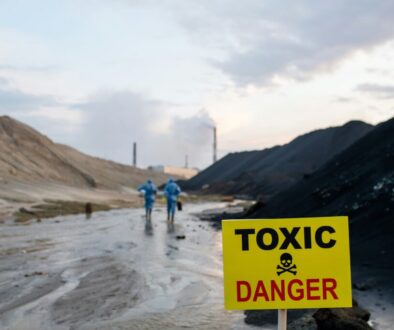Guest column: A call for coming together: Pesticide concerns need to be addressed

By Judy Wu-Smart
It has been approximately five years since I began finding total losses of the honey bee colonies located on a University research and extension center near Mead, Nebraska, where I keep bees and work as a scientist studying pesticides and bee decline. And it’s been more than two years since I began to suspect something terribly wrong was happening around the university research station.
Every year, honey bee colonies placed in multiple locations across the 9,600-acre research center were dying. After ruling out on-farm practices and common bee stressors such as a lack of food, parasites, and diseases, my lab’s investigations into the unexplained bee losses began to uncover widespread pollution originating from an ethanol facility located just a few miles upstream of my apiaries.
This ethanol facility claimed to process 98 percent of all outdated pesticide-treated crop seeds in North America for production of fuel ethanol and soil conditioners from the byproducts. Unfortunately, this practice also produced stockpiles of waste containing excessively concentrated levels of toxic chemicals known as “systemic pesticides,” including neonicotinoid insecticides, (neonics), and several fungicides.
The chemical companies that had been shipping expired, chemically treated seed for disposal through the ethanol production process are now working to assist in cleaning up the stockpiles of contaminated waste and leaking waste lagoons, which I applaud.
But the clean-up efforts do not address the reality that systemic pesticides can readily move from contaminated soil and water into nearby plants and their leaves, nectar, and pollen- movement which potentially exposes pollinators and other wildlife to these chemicals.
This is worrisome because bees and other pollinating insects provide critical pollination services to over 90 different crops. Importantly, they are also biological indicators of their surrounding environments (think “canary in the coal mine”). The inability of honey bee colonies to survive signals a much broader concern for health and safely of people, domestic animals, wildlife, and crops.
Long-term impacts
I am part of a team of Nebraska researchers now broadly examining the environmental, ecological, and human health impacts of the contamination created by the ethanol plant, both at local and state levels. This research includes studying long-term impacts of persistent exposure to mixtures of chemicals, particularly for pollinators and other beneficial insects, as well as birds, amphibians, and mammals that rely heavily on insects in the food web. Data collected to clarify environmental fate of systemic pesticides originating from waste piles and lagoons are critical to informing policy decisions.
Funding for the research team, however, is limited due to complexity of the issues, high costs for pesticide testing, and research breadth needed to appropriately evaluate impacts.
I have been studying the impact of pesticides, including neonics, on bees for over a decade, and systemic neonicotinoids have been scrutinized worldwide as harmful chemicals to pollinators since their introduction in the 1990s. Yet, surprisingly, there is no division at the US Environmental Protection Agency (EPA) to specifically address concerns that systemic pesticides can unintentionally move into plants, including those consumed by humans, livestock and pets, nor a division regulating or monitoring what happens to the excess, expired chemically treated seeds.
The federal exemption from pesticide regulations on treated articles, under which pesticide-coated seeds fall, has led local regulators to rise to the challenge themselves, resulting in piecemeal state responses to address concerns over neonics, including proper disposal options for treated seed now that the facility described above has been shut down.
As a scientist with research experience in this area, I have provided testimony for several new “extended responsibility bills” that seek accountability for hazardous products from cradle to grave. This also includes legislative efforts to re-evaluate utility of neonics to reduce their use in systems that see little-to-no added value and conserve their use in systems that truly rely on them for pest control.
A need to work together
Sadly, many of these legislative efforts are viewed as anti-business and face strong resistance as a result. However, conservation efforts to protect water, soil, and landscapes from pollution require taking a long view to preserve resources and make practices more sustainable for the future. The anti-business opposition view shouldn’t just shut down conversations meant to develop solutions that address real concerns. To what benefit?
Ultimately, this story isn’t just about many dead and dying bees, nor is it about any particular chemical. This story is about the over-use and environmental overloading of chemicals and the direct and indirect effects of exposure to all of us.
Chemicals are used in agricultural, industrial, and urban landscapes, increasing the complexity of toxic mixtures surrounding us. Animals challenged with chronic and persistent pesticide exposure often exhibit compromised health that leads to higher rates of disease outbreaks, negative impacts on growth, developmental and cognitive issues, and accelerated development of chemical resistance in pest populations, including disease vectors such as mosquitoes and ticks.
Although this incident occurring in Nebraska may be viewed as an isolated incident, chemical overloading is a potential problem for any state, and is for many. To protect our children, farmers, businesses, and livelihoods we should work collectively to reduce and eliminate pesticide formulations and products that cause more harm than good. This is not an attack on industry or those that rely on these products, but rather a recognition that we all have roles to play and must be more responsive to concerns over pesticides. We need innovative solutions to reduce chemical dependency, uses, and exposures if we all want to thrive.
Judy Wu-Smart is an Associate Professor of Entomology at the University of Nebraska-Lincoln. She has studied the effects of pesticides on bees for more than a decade. The views here do not represent the position of UNL.
(Opinion columns published in The New Lede represent the views of the individual(s) authoring the columns and not necessarily the perspectives of EWG or TNL editors.)




April 27, 2022 @ 1:18 pm
This situation was caused by the AG chemical industry. The farmers never asked for this, they simply ordered seed and it came coated with Neonics. The true dangers of these chemicals is continuously coming to light. The AG Chem industry is systematically polluting our environment at a rate of 150 million acres a year for little to no crop benefit, but huge financial benefit to the companies that produce them. When farmers understand the dangers of these chemicals they will not want any part of it. My advice to those in the area of Mead NE, RUN! organize, call your lawyer.